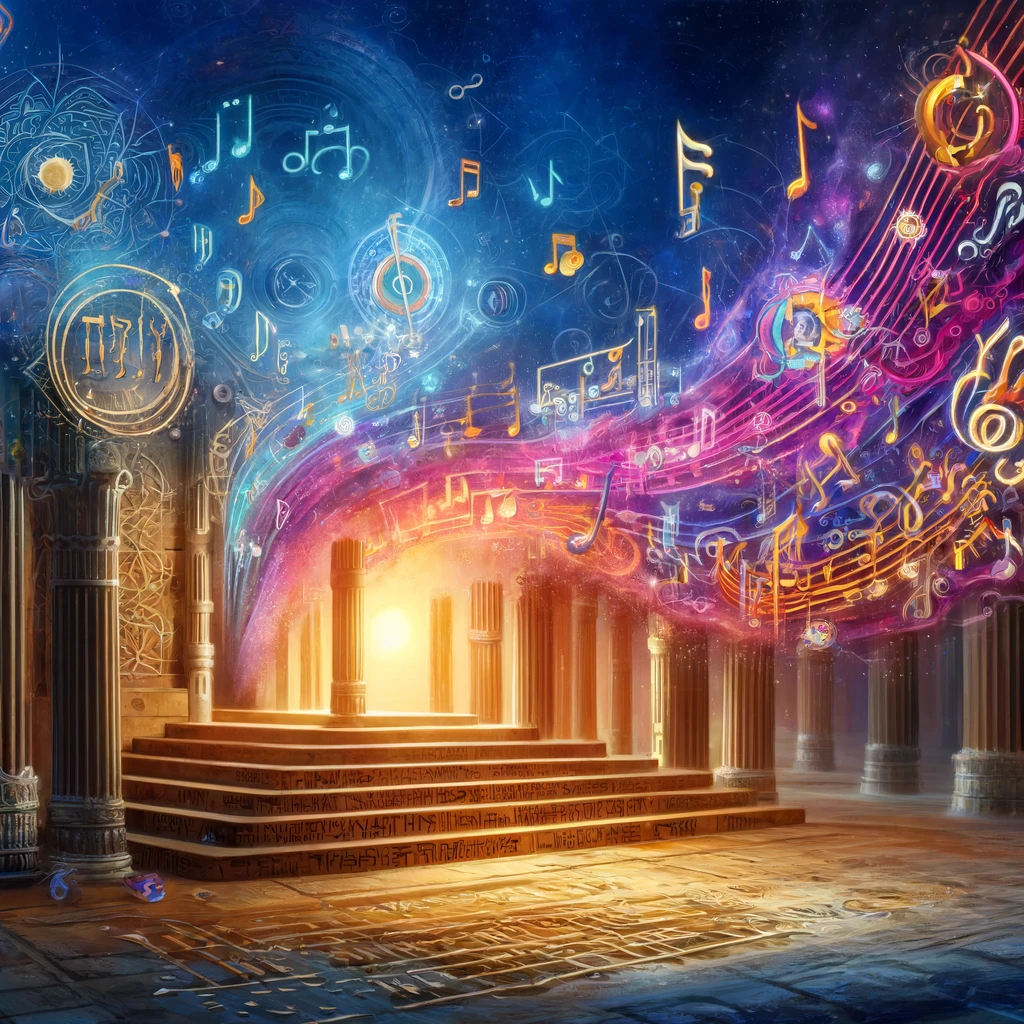Math and Geometry of Music
Languages were perhaps once ‘sung’.
By Daniel Arthur – “Ancient alphabets were constructed by using visual symbols to represent sounds. Ancient sacred architecture was constructed to send and receive those sounds to and from the gods. Because of that, ancient languages, like Egyptian, Hebrew and Greek were more poetic and musical than our own, with each letter symbol actually representing a specific tone, not just a generic phoneme. …[Greek texts] can be translated not only into other languages but into musical notes and their related shapes. Likewise, the text of the Hebrew Psalms can be translated directly into the languages of Music and Geometry, which are lost during translation into non-musical alphabets, such as English.”

The math and geometry of music offer fascinating insights into the relationship between sight and sound, revealing profound connections between mathematical principles, musical structures, and visual patterns. Here’s how these elements intersect:
1. Pitch and Frequency: In music, pitch corresponds to the perceived frequency of a sound wave, with higher frequencies producing higher pitches and lower frequencies producing lower pitches. Mathematically, pitch can be represented on a logarithmic scale known as the musical pitch scale, where each octave represents a doubling or halving of frequency. This logarithmic relationship is analogous to the geometric progression seen in musical intervals, where each interval corresponds to a specific ratio of frequencies.
2. Harmony and Ratios: The mathematical relationships underlying musical harmony are deeply rooted in geometric principles. For example, consonant intervals such as the octave, perfect fifth, and major third are based on simple ratios of frequencies, which can be visualized as geometric shapes. The harmonic series, which represents the fundamental frequencies and overtones produced by vibrating strings and air columns, forms a geometric sequence of frequencies that defines the harmonic structure of musical scales and chords.
3. Musical Notation: The visual representation of music through notation involves geometric symbols and shapes that convey information about pitch, rhythm, and expression. For example, the staff notation system used in Western music employs geometric symbols such as notes, clefs, and time signatures to represent musical elements in a visual format. The spatial arrangement of notes on the staff reflects their pitch relationships, with higher pitches positioned higher on the staff and lower pitches positioned lower.
4. Chords and Geometry: The geometric properties of musical chords and scales provide insights into their harmonic structures and relationships. For example, the circle of fifths, a geometric diagram representing the relationships between musical keys and their associated chords, demonstrates the symmetrical patterns and progressions found in tonal harmony. Similarly, geometric shapes such as triangles, squares, and hexagons can be used to visualize the intervals and chord structures found in different musical scales and modes.
5. Music Visualization: Advances in technology have enabled the development of tools and software that visualize the mathematical and geometric properties of music in interactive and dynamic ways. Music visualization techniques such as sonification, spectrograms, and geometric animations allow users to explore the mathematical relationships between sound waves, frequencies, and musical structures in real time.
Overall, the link between sight and sound in music is deeply intertwined with mathematical and geometric principles, highlighting the inherent connections between mathematics, music theory, and visual representation. By exploring these relationships, musicians, mathematicians, and artists can gain new insights into the nature of music and its profound impact on human perception and creativity.